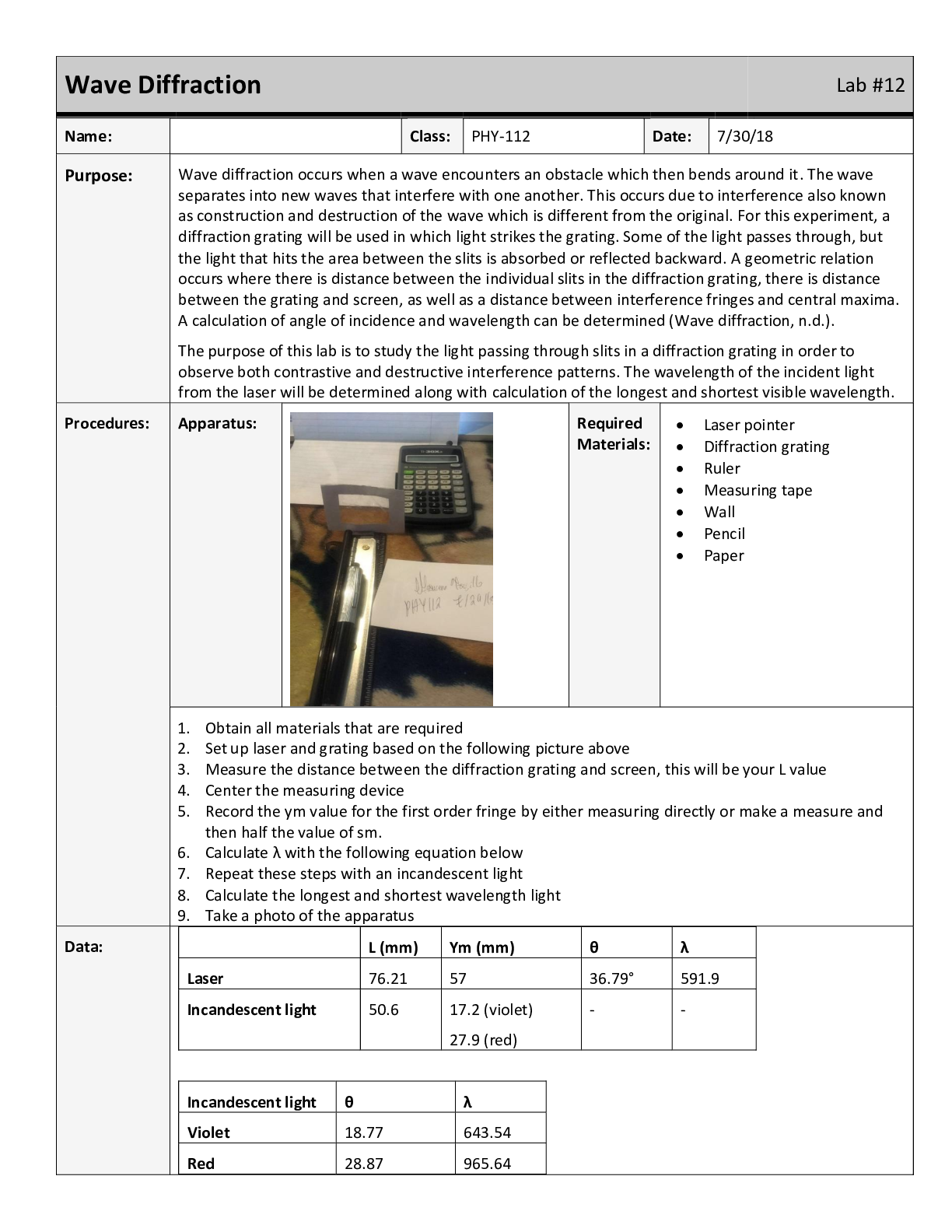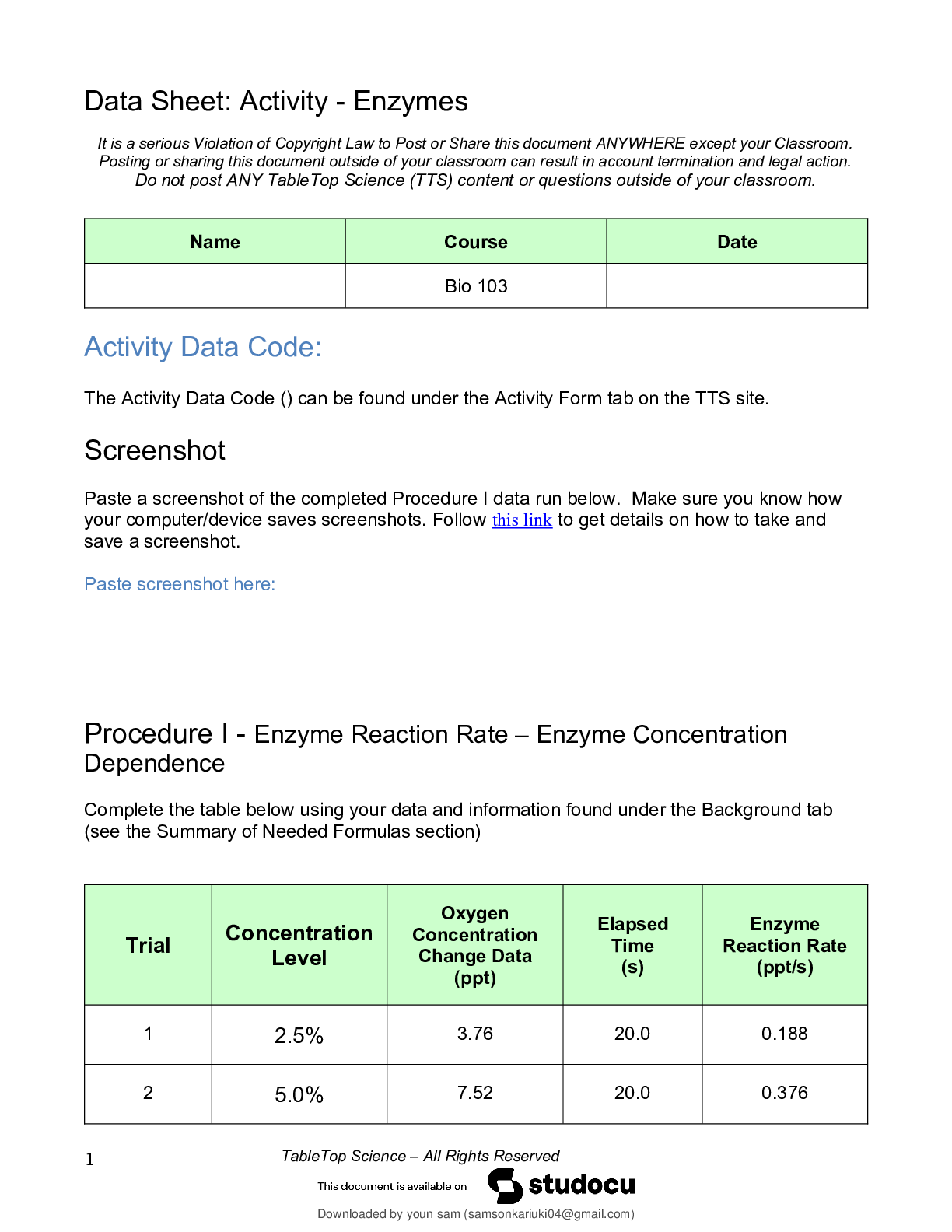Anatomy and Physiology - A&P 2 > Lab Report > BIOS252 Week 1 Online Muscular System | Anatomy and Physiology 2 (BIOS 252) | Answered Fall 2024/202 (All)
BIOS252 Week 1 Online Muscular System | Anatomy and Physiology 2 (BIOS 252) | Answered Fall 2024/2025.
Document Content and Description Below
Learning Objectives: Describe the major roles of muscle tissue Demonstrate how muscle contraction and relaxation are linked to thermoregulation, digestion, circulation, and motor function. ... Differentiate smooth, cardiac and skeletal muscle based on their microstructure. Describe the general organization and structural components of a skeletal muscle. Explain the principle of the sliding filament mechanism of skeletal muscleIdentify major muscles and their functions.IntroductionDid you know that you have more than 600 muscles in your body? Some of these muscles help to express your emotions through gesticulation and facial expressions, while the heart beats more than 3.3 billion times over 80 years! In this simulation, you will take a closer look at the three distinct muscle tissues we find in the human body and what purpose they serve.Your first task is to learn about the different types of muscle tissues found in the human body. Interact with the anatomical 3D holograms to explore the distribution and main functions of skeletal, smooth, and cardiac muscle tissues. Using the control panel to navigate the different models, you will have to collect information about the tissues to solve different scenarios relatedto the muscular system. Continue your investigation by examining the muscle tissues at the cellular level to see how the individual muscle cells of each muscle tissue compare and contrast from one another. Pick up the cellular 3D models and examine the nuclei, myofibrils, mitochondria and more to understandhow the intracellular components enable each muscle cell to perform the functions characteristicfor that muscle tissue. Follow the pathway that allows a nerve signal initiated in the brain to induce an actual muscle contraction in a skeletal muscle. Dive into the molecular level and see how the myofibrils are arranged in repeating units of sarcomeres. Compare a 3D model of a sarcomere to its electron micrograph and observe the changes that take place during contraction and relaxation. Finally, immerse yourself in the process of the sliding filament theory by interacting with the contractile proteins of a sarcomere.Explore the major muscles of different body regions in Anatomy.TV. Assignment:Part 1: Labster: “Muscle Tissues: An Overview”As you complete the lab, have the lab report ready to record data. The theory section of Labsteris a good resource for information. [Show More]
Last updated: 7 months ago
Preview 1 out of 6 pages

Buy this document to get the full access instantly
Instant Download Access after purchase
Buy NowInstant download
We Accept:

Reviews( 0 )
$10.00
Can't find what you want? Try our AI powered Search
Document information
Connected school, study & course
About the document
Uploaded On
Nov 08, 2024
Number of pages
6
Written in
Additional information
This document has been written for:
Uploaded
Nov 08, 2024
Downloads
0
Views
36





